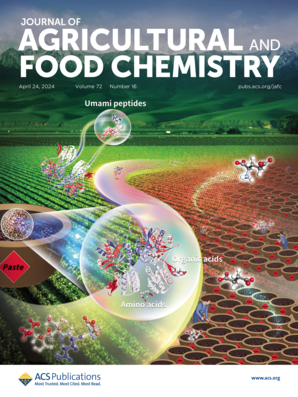SfDNAJA1和SfHSP68在秋粘虫温度胁迫反应和细胞凋亡中的作用
IF 5.7
1区 农林科学
Q1 AGRICULTURE, MULTIDISCIPLINARY
引用次数: 0
摘要
秋粘虫(Spodoptera frugiperda)是我国主要的入侵害虫。为了探索其在温度胁迫下的适应机制,我们在0°C、26°C和46°C下对6个发育阶段和两性进行了转录组分析。高温胁迫诱导的差异表达基因(8703个)多于低温胁迫诱导的差异表达基因(5426个),其中低温胁迫诱导的差异表达基因最多。性别特异性反应也很明显。16个热休克蛋白(HSP)基因和31个凋亡相关基因被鉴定为关键的应激反应因子。RNAi敲低SfDNAJA1和SfHSP68可降低温度胁迫下的存活率,增加ROS和Cyt c水平,上调凋亡相关基因,同时降低ATP水平。升高的caspase-3、G6PD和GST活性进一步表明了氧化和凋亡反应。这些结果强调了热休克蛋白在热胁迫下维持细胞稳态和调节细胞凋亡中的重要作用,为害虫适应和潜在的控制策略提供了见解。本文章由计算机程序翻译,如有差异,请以英文原文为准。

Function of SfDNAJA1 and SfHSP68 in Temperature Stress Response and Apoptosis in Fall Armyworm (Spodoptera frugiperda)
The fall armyworm (Spodoptera frugiperda) is a major invasive pest. To explore its adaptive mechanisms under temperature stress, we conducted transcriptome analysis across six developmental stages and both sexes at 0, 26, and 46 °C. High-temperature stress induced more differentially expressed genes (DEGs, 8,703) than low-temperature stress (5,426), with fourth instar larvae showing the most DEGs at low temperatures. Sex-specific responses were also evident. Sixteen heat shock protein (HSP) genes and 31 apoptosis-related genes were identified as key stress-responsive factors. RNAi knockdown of SfDNAJA1 and SfHSP68 reduced survival under temperature stress, increased ROS and Cyt c levels, and upregulated apoptosis-related genes, while ATP levels decreased. Elevated caspase-3, G6PD, and GST activities further indicated oxidative and apoptotic responses. These results underscore the essential role of HSPs in maintaining cellular homeostasis and regulating apoptosis during thermal stress, offering insights into pest adaptation and potential control strategies.
求助全文
通过发布文献求助,成功后即可免费获取论文全文。
去求助
来源期刊
CiteScore
9.90
自引率
8.20%
发文量
1375
审稿时长
2.3 months
期刊介绍:
The Journal of Agricultural and Food Chemistry publishes high-quality, cutting edge original research representing complete studies and research advances dealing with the chemistry and biochemistry of agriculture and food. The Journal also encourages papers with chemistry and/or biochemistry as a major component combined with biological/sensory/nutritional/toxicological evaluation related to agriculture and/or food.

 求助内容:
求助内容: 应助结果提醒方式:
应助结果提醒方式:


